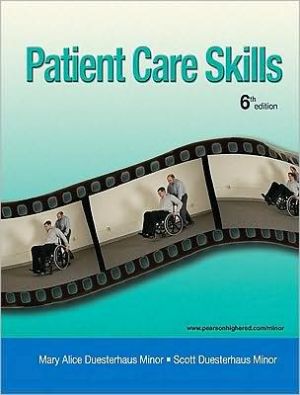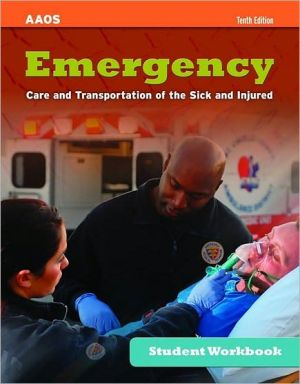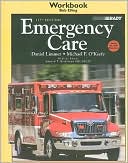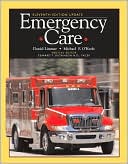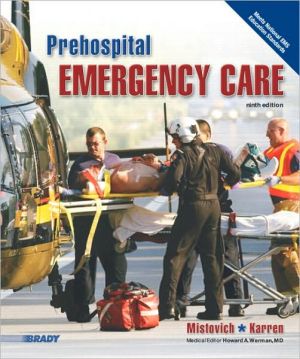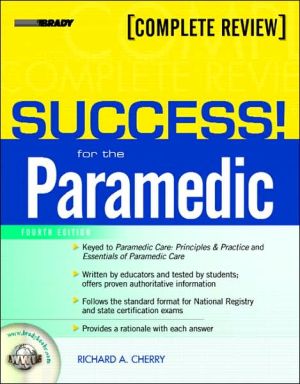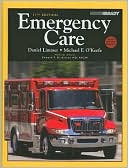Patient Care Skills
Enriched with new photographs, Patient Care Skills continues its tradition of excellence with a refreshed approach to covering all aspects of basic care skills. This book helps readers learn both the specifics of the procedures as well as general rules of good body mechanics, patient handling, and safety for patients and physical therapists/assistants. Comprehensive coverage provides all the information health care professionals need to perform skills related to patient positioning and...
Search in google:
Enriched with new photographs, Patient Care Skills continues its tradition of excellence with a refreshed approach to covering all aspects of basic care skills. This book helps readers learn both the specifics of the procedures as well as general rules of good body mechanics, patient handling, and safety for patients and physical therapists/assistants. Comprehensive coverage provides all the information health care professionals need to perform skills related to patient positioning and transfer, vital signs, aseptic technique, and more. For each procedure presented, step-by-step illustrations are accompanied by brief written explanations. Following the sequence of illustrations for a specific procedure decreases the need for extensive text explanations and provides readers with a visual reference to determine if the sequence of steps they are performing matches the sequence of steps presented.
ContentsPrefaceAcknowledgementsChapter 1 Americans with Disabilities ActLearning ObjectivesKey TermsIntroductionResourcesGeneral Considerations for AccessibilitySpecific RequirementsAccessible RouteAssembly and Auditorium Areas for Wheelchair SeatingCheck-Out CountersClear-Space AreasControl MechanismsCurb CutsDoors and DoorwaysDrinking FountainsElevatorsGrab BarsGround and Floor SurfacesHandrailsHotels (Transient Lodging)Medical FacilitiesParking SpacesPlatform LiftsRampsReach RangesRestrooms and BathroomsStairsTransportation FacilitiesReview QuestionsSuggested ActivitiesCase StudyReferencesChapter 2 Patient/Client Management ProcessLearning ObjectivesKey TermsIntroductionHealth Insurance Portability and Accountability Act (HIPPA)Models for Describing the Continuum of Health to DisabilityGuide to Physical Therapist PracticeExaminationChart ReviewInterviewSystems ReviewTests and MeasuresEvaluationDiagnosisPrognosisPlan of CareGoalsInterventionDocumentationFormats of Medical RecordsFormats of NotesRequirements for Adequate DocumentationMedicare GuidelinesAudit of Patient CareReview QuestionsSuggested ActivitiesCase StudyReferencesAppendicesChapter 3 Preparation for Patient CareLearning ObjectivesKey TermsIntroductionManagement of the EnvironmentProcedure 3-1 Body MechanicsInstructions and Verbal CommandsPatient PreparationTransportingProcedure 3-2 Transporting via GurneyProcedure 3-3 Transporting via WheelchairDescending Curb — Backward MethodDescending Curb — Forward MethodAscending Curb — Backward MethodAscending Curb — Forward MethodDoorwaysWheelchair WheeliesElevatorsReview QuestionsSuggested ActivitiesCase StudyChapter 4 Aseptic TechniquesLearning ObjectivesKey TermsIntroductionDefinitionsGuidelines for Isolation Precautions in Health Care SettingsRationaleModes of TransmissionPrecautionsAdministrative ControlsStandard PrecautionsNew Elements of Standard PrecautionsRespiratory Hygiene/Cough EtiquetteStandard Precaution GuidelinesContact PrecautionsContact Precaution GuidelinesDroplet PrecautionsDroplet Precaution GuidelinesAirborne PrecautionsAirborne Precautions GuidelinesTransmission-Based PrecautionsApparelSterile FieldRequirement 1Requirement 2Requirement 3Requirement 4Requirement 5Requirement 6Requirement 7Requirement 8Scrubbing vs. HandwashingProcedure 4-1 GowningProcedure 4-2 GlovingRemoval of Contaminated GlovesWounds and Wound DressingsPurposeEvaluationTypes of DressingsMaterialsPreparationProcedure 4-3 Application of Dressings and WrapsPacking a WoundApplying a Gauze WrapApplying a Compression WrapReview QuestionsSuggested ActivitiesCase StudyReferencesChapter 5 Vital SignsLearning ObjectivesKey TermsIntroductionHeart RatePurposeMethodsProcedure 5-1 Measuring Heart RateSitesNormsBlood PressurePurposeMethodSiteProcedure 5-2 Measuring Blood PressureNormsRespirationPurposeMethodsProcedure 5-3 Measuring Respiratory RateNormsTemperaturePurposeMethodsSitesNormsPainPurposeMethodSiteNormsAnthropometricsPurposeMethodsNormsReview QuestionsSuggested ActivitiesCase StudyReferencesChapter 6 WheelchairsLearning ObjectivesKey TermsIntroductionWheelchair ComponentsWheel LocksPelvic PositionersCaster WheelsDrive (Push) WheelsArmrestsFront RiggingWheelchair TypesFolding WheelchairStandard WheelchairFixed-Frame WheelchairReclining-Back WheelchairTilt-in-Space WheelchairOne-Arm Drive WheelchairAmputee WheelchairCompanion WheelchairMotorized Wheelchairs and ScootersPower-Assist ChairProcedure 6-1 Measuring to Determine Wheelchair SizeMeasuring for Seat DepthMeasuring for Seat WidthMeasuring for Back HeightMeasuring for Armrest HeightMeasuring for Seat-to-Footplate LengthMeasuring for Footplate SizeStandard Wheelchair SizesReview QuestionsSuggested ActivitiesCase StudiesChapter 7 TransfersLearning ObjectivesKey TermsIntroductionLevels of TransfersLevels of AssistanceAmount of AssistanceType of AssistanceGeneral RulesBody MechanicsGait or Transfer BeltsPreparing the EnvironmentInstructions and Verbal CuesCompleting the TransferProcedure 7-1 Sliding Transfer: Cart to Treatment TableProcedure 7-2 Three-Person CarryHydraulic LiftProcedure 7-3 Using a Hydraulic LiftProcedure 7-4 Two-Person LiftWheelchair to FloorFloor to WheelchairProcedure 7-5 Dependent Standing PivotProcedure 7-6 Dependent Sitting PivotProcedure 7-7 Sliding BoardProcedure 7-8 Push-UpProcedure 7-9 Assist to Front of Wheelchair SeatSide-to-Side Weight ShiftingPelvic SlideSitting Push-UpProcedure 7-10 Assist for Moving From Edge of Treatment TableProcedure 7-11 Assisted Standing PivotGuarding the Right Lower Extremity While Transferring to RightGuarding the Left Lower Extremity While Transferring to RightWheelchair to Treatment Table: Using a Step StoolProcedure 7-12 Squat Pivot TransferProcedure 7-13 Transfers Between Floor and WheelchairDependent One-Person Transfer: Floor to WheelchairProcedure 7-14 Independent Transfer From Wheelchair to Floor and ReturnPreparing the WheelchairForward Lowering: Wheelchair to FloorBackward Lift: Floor to WheelchairBackward Lift Using a Step Stool: Floor to WheelchairTurn Around: Wheelchair to FloorTurn Around: Floor to WheelchairForward to Hands-Knees Via Kneeling: Wheelchair to FloorForward to Hands-Knees: Wheelchair to FloorReview QuestionsSuggested ActivitiesCase StudiesReferencesChapter 8 Turning and PositioningLearning ObjectivesKey TermsIntroductionGoalsTime in PositionsProcedure 8-1 General ProceduresSupine PositionProcedure 8-2 Turning From Supine to ProneProne PositionProcedure 8-3 Turning From Prone to SupineProcedure 8-4 Turning on a Floor MatSidelyingProcedure 8-5 Turning From Supine or Prone to SidelyingProcedure 8-6 Moving From Supine to SittingSupine to Long SittingSidelying to Sitting on Side of TableSupine to Sitting on Side of TableReview QuestionsSuggested ActivitiesCase StudiesChapter 9 Range of Motion ExerciseLearning ObjectivesKey TermsIntroductionMethodsAnatomical Planes of MovementDiagonal Patterns of MovementDirectionsProcedure 9-1 Lower Extremity ROM Exercises: Anatomical PlanesProcedure 9-2 Lower Extremity ROM Exercises: Diagonal PatternsProcedure 9-3 Upper Extremity ROM Exercises: Anatomical PlanesProcedure 9-4 Upper Extremity ROM Exercises: Diagonal PatternsProcedure 9-5 Head, Neck, and Trunk ROM Exercises: Anatomical PlanesReview QuestionsSuggested ActivitiesCase StudiesReferencesChapter 10 Ambulation With Ambulatory Assistive DevicesLearning ObjectivesKey TermsIntroductionTeaching TipsTraining EnvironmentParallel BarsFatiguePatient ConcentrationWeight BearingMethods of InstructionContent of InstructionChoosing an Assistive DeviceWalkersAxillary CrutchesForearm (Lofstrand) CrutchesCanesChoosing a Gait PatternWeight Bearing StatusTwo-Point Gait PatternFour-Point Gait PatternThree-Point Gait PatternSwing-To Gait PatternSwing-Through Gait PatternProcedure 10-1 GuardingIn and Out of a WheelchairLevel SurfacesFallingAscending/Descending StairsProcedure 10-2 Assumption of Standing and SittingPreparing a WheelchairPositioning a PatientAssumption of StandingAssumption of SittingProcedure 10-3 Ascending and Descending StairsAscending StairsDescending StairsCurbsMoving Through DoorwaysTilt TableWalkersFittingProcedure 10-4 In and Out of a Wheelchair With a WalkerAssuming Standing Using a WalkerAssuming Sitting Using a WalkerAssuming Standing Using Both ArmrestsAssuming Sitting Using Both ArmrestsProcedure 10-5 Ambulating With a WalkerThree-Point Gait PatternSwing-To Gait PatternProcedure 10-6 Ambulating on Stairs With a WalkerStair-Climbing WalkerStandard WalkerProcedure 10-7 Ambulating Through Doorways With a WalkerDoor Opens Toward PatientDoor Opens Away From PatientAxillary CrutchesFittingProcedure 10-8 In and Out of a Wheelchair With Axillary CrutchesAssuming Standing: Physical Therapist/Assistant on Involved SideAssuming Sitting: Physical Therapist/Assistant on Involved SideAssuming Standing: Physical Therapist/Assistant on Uninvolved SideAssuming Sitting: Physical Therapist/Assistant on Uninvolved SideProcedure 10-9 Ambulating on Level Surfaces With Axillary CrutchesThree-Point Gait PatternFour-Point Gait PatternTwo-Point Gait PatternFallingProcedure 10-10 Ambulating on Stairs With Axillary CrutchesHolding the CrutchesAscending Using a HandrailDescending Using a HandrailAscending and Descending Stairs Without Using a HandrailProcedure 10-11 Ambulating Through Doorways With Axillary CrutchesDoorways with Automatic Door CloserDoorways without Automatic Door CloserForearm (Lofstrand) CrutchesFittingProcedure 10-12 In and Out of a Wheelchair With Forearm CrutchesAssuming Standing Using the Turn-Around MethodAssuming Sitting Using the Turn-Around MethodAssuming Standing Using the Power MethodAssuming Sitting Using the Power MethodProcedure 10-13 Ambulating on Level Ground With Forearm CrutchesSwing-To Gait PatternSwing-Through Gait PatternFallingAssuming Standing from the FloorDoorwaysProcedure 10-14 Ambulating on Stairs With Forearm CrutchesAscending — Forward MethodDescending — Forward MethodAscending — Backward MethodDescending — Backward MethodCanesFittingProcedure 10-15 In and Out of a Wheelchair With One CaneAssuming Sitting — Quad Cane and ArmrestsAssuming Standing — Quad Cane OnlyAssuming Sitting — Quad Cane OnlyAssuming Standing — Standard Cane and Two ArmrestsAssuming Sitting — Standard Cane and Two ArmrestsAssuming Standing — Standard Cane and One ArmrestAssuming Sitting — Standard Cane and One ArmrestProcedure 10-16 Ambulating On Level Surfaces With One CaneProcedure 10-17 Ambulating On Stairs With One CaneHolding the CaneAscending Using a Cane and HandrailDescending Using a Cane and HandrailAscending Using One CaneDescending Using One CaneProcedure 10-18 Ambulating Through Doorways With One CaneDoorways with Automatic Door ClosersProcedure 10-19 In and Out of a Wheelchair With Two CanesAmbulating on Level Surfaces With Two CanesThree-Point Gait PatternFour-Point Gait PatternTwo-Point Gait PatternProcedure 10-20 Ambulating on Stairs With Two CanesHolding the CanesThree-Point Gait PatternFour-Point Gait PatternTwo-Point Gait PatternProcedure 10-21 Ambulating Through Doorways With Two CanesDoor With Automatic Door ClosersDoor Without Automatic ClosersReview QuestionsSuggested ActivitiesCase Studies
